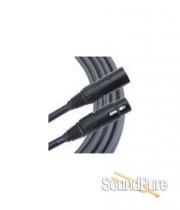-
Call Us Toll Free888-528-9703
-
Local/International (+1)919-682-5552
- Call Us! Toll Free! 888-528-9703
- Local / International (+1) 919-682-5552

Rupert Neve Designs Newton Channel Strip w/ RNDI From Neve
Class-A Microphone Preamp, 3-band discrete EQ, VCA compressor, and Transformered Output with Silk Control (Red & Blue) combined with a high quality DI box
$2,398.00
"Experience the Difference"
 Payments as low as $54/mo.
Payments as low as $54/mo.
Manufacturer's Description from Neve
Rupert Neve Designs is proud to announce the Newton Channel, a powerful modern channel strip born from a legendary sonic lineage. Its intuitive design provides classic sound on demand, with all the instantly-recognizable character, musical tone-shaping abilities, and proven reliability that define a Rupert Neve Designs product. Equally well-suited for a project studio, voiceover setup, large-scale commercial facility or live sound rig, the Newton gives more engineers, producers, and artists a chance to join the RND family than ever before.
The name originates with Rupert’s birthplace – Newton Abbot, England – and reflects the sonic journeys of his life: from Newton Abbot to Wimberley, vintage to modern, and everything in between. The Newton includes a fully Class-A mic preamp with a sweepable high-pass filter, a musical 3-band discrete EQ section with LF & HF shelves and a fully parametric mid band, a fast & flexible VCA compressor, and custom Rupert Neve Designs transformer-coupled outputs with RND’s beloved harmonic color stage: variable Silk Red & Blue.
The Newton’s input stage accepts both mic and line level signals, the compressor’s action can be linked with a second Newton, and 31-position detented controls are used throughout. This makes the Newton ideal not just for tracking, but also for stereo bus processing when paired with a second unit. The compressor can be placed pre or post EQ, and both the EQ and compressor can be fully bypassed via switches on the front panel.
Like many other recent Rupert Neve Designs products, the Newton Channel also offers both Main and -6dB Outputs, the latter enabling engineers to fully drive the Newton in order to achieve more transformer harmonics without clipping the next device in the chain. Coupled with variable Silk Red and Blue modes to enhance musically relevant harmonic content across two different frequency ranges, the Newton offers a wide variety of sonic coloration possibilities ranging from clean & transparent to over-the-top vintage tones.
The Newton Channel is made in the USA and begins shipping worldwide in June 2023.
Mic Gain
12-position rotary switch that controls the microphone preamp gain in 6dB steps. For line level input signals, set the Mic Gain to the “0dB” position.
48V
Push-button switch that illuminates RED when +48V Phantom Power is engaged.
Ø (Polarity)
Push-button switch that illuminates AMBER when engaged and inverts the phase of the preamp signal.
TRIM
31-detent potentiometer that allows the user to adjust the preamp gain within a range of +/- 6dB.
HPF
Push-button switch that illuminates GREEN when the high pass filter is engaged.
FREQ
31-detent potentiometer that allows the user to adjust the cutoff frequency of the Sallen-Key high pass filter within a range of 20Hz to 250Hz.
EQ IN
Push-button switch that illuminates GREEN when the EQ section is engaged.
LF
31-detent potentiometer that controls the amount of boost or cut for the low frequency shelf within a range of +/- 12dB.
60/150
Push-button switch that selects between the two available low frequency shelf frequencies: 60Hz (OUT) and 150Hz (IN).
MID FREQ
31-detent potentiometer that controls the frequency of the midband peaking EQ within a range of 220Hz to 7kHz.
MID
31-detent potentiometer that controls the amount of boost or cut for the MID FREQ peaking EQ within a range of +/- 12dB.
8K/16K
Push-button switch that selects between the two available high frequency shelf frequencies: 8kHz (OUT) and 16kHz (IN).
HF
31-detent potentiometer that controls the amount of boost or cut for the high frequency shelf within a range of +/- 12dB.
COMP IN
Push-button switch that illuminates GREEN when the compressor section is engaged.
THRESHOLD
31-detent potentiometer that controls the compressor threshold range from +20dBu to -30dBu. When the input signal rises above the set threshold level, compression begins with a soft-knee at a 2:1 ratio.
RELEASE
31-detent potentiometer that controls the compressor release time. The overall timing range available is 50mS (FAST) to 500mS (SLOW). Note: Attack time is fixed at 20mS.
GAIN
31-detent potentiometer that controls the compressor make-up gain within a range of -6dB to +20dB.
PRE EQ
Push-button switch that routes the compressor section ahead of the EQ section when engaged.
SILK
Illuminated push-button switch that toggles through the three available SILK modes: OFF, RED, and BLUE.
TEXTURE
31-detent potentiometer that controls the amount of SILK harmonics added within the transformer output stage when SILK is engaged.
GR and OUT Metering
8-segment LED meters that indicate compressor gain reduction (dB) and output level (dBu).
POWER
LED that illuminates GREEN when the Newton Channel is powered ON.
REAR PANEL FEATURES
POWER
IEC AC power inlet with integrated power switch. 100-240VAC at 50/60Hz. 35 Watts maximum AC power consumption.
GROUND LIFT
Slide switch that lifts XLR Pin 1 from chassis ground on the MAIN OUT as well as the -6dB OUT to help isolate from ground interference.
-6dB OUT
Balanced XLR output utilizing a lower level, secondary output on the custom Rupert Neve Designs transformer.
MAIN OUT
Balanced XLR output utilizing a custom Rupert Neve Designs transformer.
LINK
1/4” TRS jack that allows two Newton Channel compressors to be linked together for stereo compressor operation. *Only intended for use with other Newton Channel LINK jacks.
INPUT
Balanced XLR-1/4” TRS combo jack input that can be used for MIC or LINE level signals.
The carefully orchestrated union of custom Rupert Neve-designed transformers and class-A biased, discrete FET amplifiers is key to the RNDI’s unique response, delivering a powerful and vibrant direct sound capable of reproducing the full harmonic depth of basses, guitars, acoustic instruments, and professional line level sources. With portable, powerful, larger-than-life tone for your instrument and amplifier signals, the RNDI is truly the first standalone DI worthy of the Rupert Neve name.
After coming into existence during an experimentation with new transformer designs, the RNDI was fine-tuned over a series of listening tests against the the most popular high-end DIs available. It was in these tests where the RNDI always seemed to add another dimension to the sound and bring the instruments to life. The lows felt richer, deeper and fuller, and the highs had outstanding clarity without any added harshness. Most importantly, the design team noted: "As musicians, the RNDI consistently stood out as the DI we wanted to play through."
The RNDI’s signature sound is the product both of new custom Rupert Neve-designed transformers and class-A biased, discrete FET amplifiers. The carefully orchestrated union of these two elements is key to the RNDI’s unique response.
The transformers provide superior passive isolation while adding musical harmonics and dimension to the sound. The low impedance, transformer balanced output excels at driving long cable runs, and performance is immensely consistent regardless of the connected equipment. This is very important for both live and studio environments where the unamplified signal may travel almost 100ft before hitting an amplifier. In other designs, these high capacitance lines cause major reductions in high frequencies, however the output stage of the RNDI unrivaled at handling long runs with minimal losses.
The class-A and discrete FET amplifier in the RNDI is powered by industry-standard 48V phantom power on the XLR connection, and creates a very high impedance input of 2M Ohms that ensures consistent performance with a wide variety of instruments. The significance of the RNDI’s class-A design is that there is no crossover distortion added to the signal, which can add upper order odd harmonics to the sound that are musically dissonant in nature. With the RNDI, the overwhelming majority of harmonic content is 2nd order (octave) with some 3rd order present (fifth above octave). These musically relevant harmonics – present in subtle amounts – actually add to the richness of the original signal. The discrete aspect of the RNDI design means there are no ICs or digital components that can have negative effects on the tone.
These efforts to harmonize the performance of the transformer and the FET amplifier have resulted in the RNDI’s extremely well balanced response. The low end tonality is thick and powerful, with frequency response several octaves below audibility. The high end is clear, present, and smooth, with a frequency response extending beyond 100kHz. The phase coherence is unrivaled at all frequencies, which keeps the sound as natural as possible – especially vital when blending the direct signal with a microphone capture of the same source. Simply put, there is no DI ever made that performs like the RNDI.
In instrument mode, the RNDI’s high input headroom of +21.5dBU is capable of handling not only instruments, but professional, line level sources like interfaces, CD players and drum machines without a pad. This allows the RNDI to serve as a way to "Re-Preamp" any previously recorded track using your interface and a desired pre-amp. To do this, simply connect a channel output of the interface to the input of the RNDI and connect the RNDI’s output to the preamp and engage 48V. By "Re-Preamping" you can apply the tone of another preamp to the source and more accurately automate or control the drive level on the preamp.
In speaker mode, the RNDI can handle the screaming output of a 1000-watt power amplifier (92 Vrms or 266Vp-p) to capture the full tone of the instrument, preamplifier, EQ, inserts, and the amplifier’s output stages before it hits the speakers. This technique allows the engineer to avoid any bleed in a live environment and any unwanted tone added by the speaker cabinet or microphone. When used with modern speaker emulation plug-ins, this technique allows the engineer to take advantage of both the flexibility of digital modeling and the superior non-linear response of an actual analogue amplifier.
In a speaker feed configuration, the DI is used post-power amplifier to capture the tone of the preamp and power amp. Be sure to switch the RNDI input level to speaker and connect the amplifier and speaker BEFORE turning the amplifier on.
Note: with tube power amps, THE SPEAKER MUST BE CONNECTED to the THRU connection to provide a load for the amplifier. Please read your amplifier’s manual to discern its range of acceptable loads. Solid state amps can generally be run without a speaker connected, although you should always consult your amplifier’s manual to be sure. The RNDI can handle the full amplified output of a 1000W amp, so you can confidently drive the output stages of any amp less than 1000W to get your desired tone.
In an instrument configuration, the DI converts the impedance of the instrument signal, balances the signal (if unbalanced), provides a buffered output stage to send to a separate mic preamp, and optionally sends the THRU connection to the amp input. To get the best performance out of your RNDI, we recommend you use the best available cables and mic preamps, and output the maximum level from your instrument. The instrument connects to the IN jack, and if you want to feed an amplifier, connect the THRU output to your amplifier’s input. The output of the RNDI in both instrument and speaker mode feeds a separate preamp for final gain.
In a speaker feed configuration, the DI is used post-power amplifier to capture the tone of the preamp and power amp. Be sure to switch the RNDI input level to speaker and connect the amplifier and speaker BEFORE turning the amplifier on.
Note: with tube power amps, THE SPEAKER MUST BE CONNECTED to the THRU connection to provide a load for the amplifier. Please read your amplifier’s manual to discern its range of acceptable loads. Solid state amps can generally be run without a speaker connected, although you should always consult your amplifier’s manual to be sure. The RNDI can handle the full amplified output of a 1000W amp, so you can confidently drive the output stages of any amp less than 1000W to get your desired tone.
In an instrument configuration, the DI converts the impedance of the instrument signal, balances the signal (if unbalanced), provides a buffered output stage to send to a separate mic preamp, and optionally sends the THRU connection to the amp input. To get the best performance out of your RNDI, we recommend you use the best available cables and mic preamps, and output the maximum level from your instrument. The instrument connects to the IN jack, and if you want to feed an amplifier, connect the THRU output to your amplifier’s input. The output of the RNDI in both instrument and speaker mode feeds a separate preamp for final gain.

About Manufacturer
Specifications
Newton Channel Specifications:
Input Impedance: 8900 Ohms
Input to Line Output (No Features Engaged, Un-weighted)
Maximum Input Level: +23.6dBu
Noise (Un-weighted)
Line Out (Unity Gain): -102dBu
-6dB Line Out (Unity Gain): -107dBu
Line Out (+30dB Gain): -95dBu
Equivalent Input Noise @ +30dB Gain (EIN): -125dBu
Maximum Output Level @ 1kHz: +23.6dBu
Frequency Response
<10Hz to 30kHz: +/- 0.1dB
<5Hz to 70kHz: +/- 0.25dB
<5Hz to 140kHz: -3dB
THD+N, BW (<10Hz to 22kHz)
0dBu at 1 kHz: 0.0013%
+20dBu at 1 kHz: 0.0007%
Input to Line Output (Equalizer Engaged)
Noise (BW <10Hz to 22kHz): -90dBu
THD+N @ 0dBu (EQ Flat): 0.003%
Input to Line Output (Compressor Engaged)
Noise @ 0dB Make-Up Gain (BW <10Hz to 22kHz): -91dBu
THD+N @ 0dBu (EQ Flat): 0.005%
Compressor Section
Attack Time: 20mS (fixed)
Release Time: Variable; 50mS (Fast) to 500mS (Slow)
PRODUCT DIMENSIONS (W x D x H)
19” (48.3 cm) x 8.125” (20.63 cm) x 1.75” (4.5 cm)
SHIPPING DIMENSIONS (L x W x H)
24” (61 cm) x 13” (33 cm) x 4” (10.2 cm)
SHIPPING WEIGHT
9 lbs. (4.1 kg)
RNDI Specifications:




















